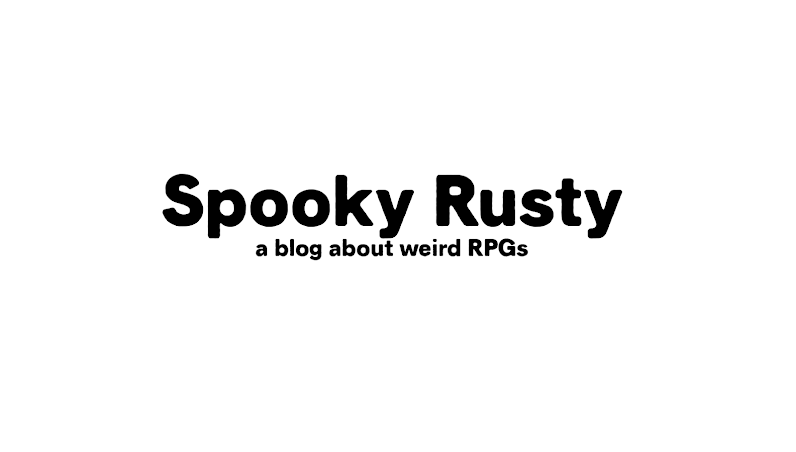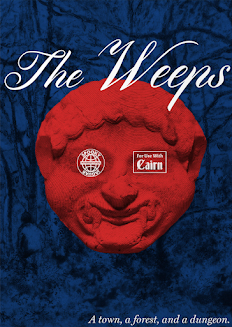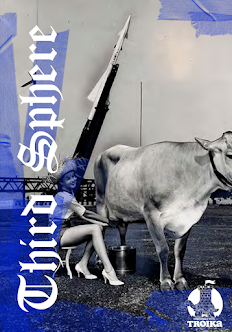Before I get into this review I'd like to point out a few things.
There is no 'better' in art, only 'different'.
I think some people never learn this or else they forget over time.
I think that many more people know it, that there is no 'better' in art but those are the people who don't get much attention.
I decided to let the things I wrote about this book 'sit' for one day (or more?) and to edit them again (and again?) before posting them here; this is so that what will be posted here will have a certain two-day minimum accumulation (or de-accumulation) of insight, originality, clarity, interestingness, ungeneralizationness, excitement, cogency, and readability.
Initially I didn't think the book was that great, but I looked at it again and kept an open mind; actually I was just a little detached form it.
I read this book in a firestone, the tire repair place.
Then again one night between a comfortable seat outside and my bed.
It's a system agnostic book and therefore provides no stats.
The book uses Belief Maps as reference tools to help you determine what NPCs will do based on their core and peripheral beliefs. An example scenario is provided. Not every group of NPCs gets these belief maps though.
Here's an attempt to briefly summarize the introduction of the book.
It starts raining on the fields of a farmer named Boris Koza.
The storm seems weird.
There's magenta lightning.
It rains the next day.
It rains the next day.
It rains the next day.
There's a flood for the first time.
More rain.
Rain ceases.
The goats of the farm have been transformed by the storm. They now walk on their hind legs, call the farmer father, and call themselves the Koza.
Included are 8 'situations' for you players, fleshed out in varying degrees. Each 'situation' incorporates a different cast, faction, enemy, npc, or all of the ladder.
One 'situation' features a pair of magically minded alchemist Koza twins. Along with a paragraph about them we get information on their previous and potential future clients as hooks.
Koza are the center of the setting from which everything else in the book seems to spring from. I can relate to some of their herd. Without getting too involved with the story line and themes, many of the Koza suffer. To some existence is suffering, hopelessness, disappointment, and meaningless.
"Their bodies are flawed and ill-suited to existence. They lack the ability to grasp things. Their bodies hurt on four legs or two. Their minds constantly reel between the needs of a goat and the needs of a human. It is agony."
Though there is another group of Koza who view life as a blessing.
Another 'situation' in the book involves an abandoned magical child in a 'disused castle scorned by time'.
"Below the neck a human toddler, squirming and ruddy; above, clouds slowly drift. They do not want food or water, though their clouds will consume anything magical they are left near. What they need is stimulation: to be held and loved and shown the world. Their growth will mirror that of a normal human, though even in adulthood the clouds will never leave them. "
I like everything about this. We should team up right now, get the child, and teach them to avoid people who mock and ridicule others while promoting slowness, nature, and carefulness.
Accompanying a few possible adoptees for the child, besides us, there's a d20 'Moods of the Child' table that details how the clouds react to the child's emotions.
"Guilty: Frost forms on the child’s shoulders and dark clouds heave with deep breaths.
Jealous: Lightning arcs from dark clouds and static charge clings to all nearby."
By my count there are 68 NPCs. At least 10 of them are Fey creatures listed in a d10 table called 'Fey and their Portents'. Here's one I could run a whole one shot about.
"Countess of Riots: Unbreakable wicker lithely stretched into a cat-shape with eyes of embers. They rarely speak.
Baskets of apples appear during revolutions."
The last part of the book I'd like to talk about is a 'situation' called 'Please for Justice'.
The Koza eventually find a ritual that allows them to summon the justice of the Fae (I know earlier I wrote the word 'Fey', and now I've used the word 'Fae', it's written differently in each section of the book, maybe it's intentional). I find this 'situation' to be the most interesting part of the book. Outsiders from the Koza community are invited (or abducted?) to bring their perspectives and the Koza begin debating, in the presence of a Fae justice, what is best for them overall. Some of them wish to return to their natural state of being a goat. They view their transformation from the weird rain as an affliction from some higher being. The Fae don't really seem to care either way. The book provides detailed opinions the different NPCs have on the matter.
“Surely you don’t wish us to promote lowly goats to the status of perfection?” Duchess of Tuesday
“They should prove their means and abilities before having children.” Bret Ligule
“A deformity to some may be an aesthetic blessing to others— parameters must be discussed!” Lord of the Impossible
This release is 38 pages, includes 8 pieces of original interior art, and is considered a 'toolkit' for the OSR.
Some things found within the book that I didn't talk about include:
1. technology
2. fanatic cults seeking to dominate all un-human beings
3. constructs discovering what it means to be 'alive'
4. contradictory dwarves who find themselves as 'scholarly warriors'
5. an evil lair inside the giant skull of a long forgotten beast on a mountain top
6. psychedelics
In closing,the Koza will live in my head rent free for quite some time, not forgotten.
An interview with the author
After I read this book I felt very calm. My heart beat slower and I moved slower through the world and was very calm (this would make a good blurb for a future print of the book). Tell me what you feel like when you write...
My writing process often starts in a place of walking down an unlit tunnel by feel, so I guess it feels lost or searching? I will say that this becomes less of an issue when I write with a partner as a conversations will help me distill themes and ideas, but most of my writing starts very blind and aimless until I find something I want to explore.
Is this something you test played or ran for friends over a long period of time?
We both have online groups that we test play things with. I tend to not focus on mechanics so any play testing I do is about focusing ideas and the 'if/then" of player agency.
Where do you get your inspiration from?
Inspiration comes from everywhere. A lot of what's in Twice Made came from conversations regarding belief. Particularly how much time popular rpgs focus on either making everything a plain playing field to accommodate social attitudes + the illusion of "balance" or distinct differences in characters based on arbitrary physical markers. We really wanted to dive into the "whys of people". The Vassal came from the line in The Iron Giant, "I am not gun" and what that would mean for folks as a group and not just one person. The Koza came from a mix of humor regarding the fucked up shit fey do in old fairy tales and wanting to have a serious conversation about bodily autonomy with regard to disability and physicality.
What are you working next?
I always have a bunch of irons in the fire and I never know what's gonna come out of the pipeline. Right now I've got a Troika sphere, Mothership setting book, and a handful of Liminal Horror stuff at various stages of editing.
If you were literally a possum what would you do?
I'd get so fat. Sleep so much, just strut around, and hang by my tail all day.
The book is for sale at the Exalted Funeral and Spear Witch online stores.
Follow Bolt-Neck Opossum on twitter.










Quite a helpful review. This book sounds sweet
ReplyDelete